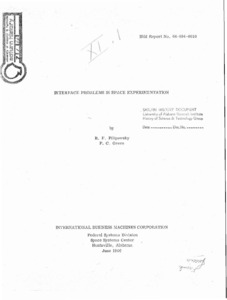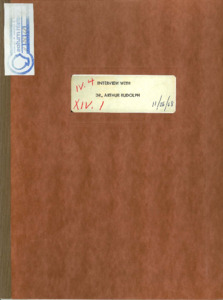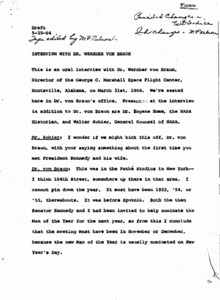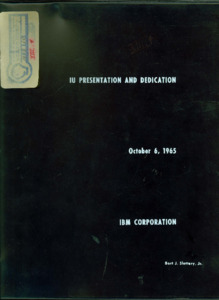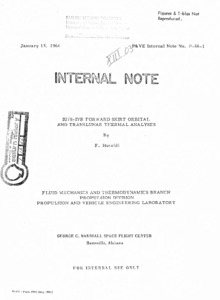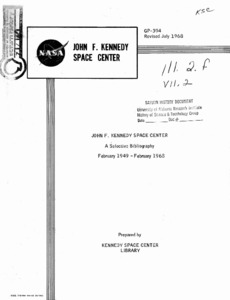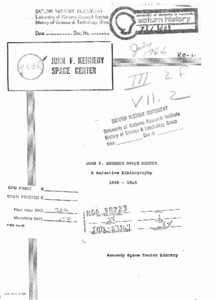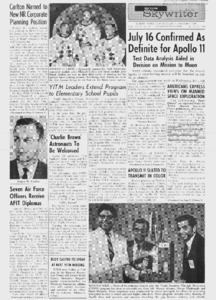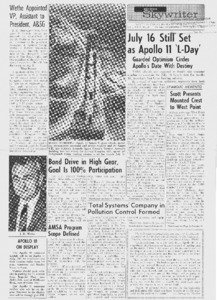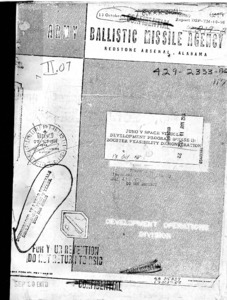
Browse Items (970 total)
Sort by:
-
"Interface Problems in Space Experimentation."
Space experimentation is expanding rapidly. Unmanned satellites are being equipped with precision instruments of greater power, and manned space stations accommodating large crews are in the drawing-board stage. The interface problems between these sophisticated instruments and between man, the spacecraft, and the supporting groundstations are multidimensional. This paper analyzes the scientific/technical areas of space experimentation, and continues with a review of the subsystems and support systems required to supply and operate the large variety of instruments. Areas of major integration efforts are singled out and the requirements for further developments and improvements are listed. A bibliography of 95 references is enclosed to assist in the identification of more detailed reports on all vital aspects of space experimentation.; Archive copy is a photocopy.; Supplement to IEEE Transactions on Aerospace and Electronic Systems, Vol. AES-2, No. 4, July, 1966. Pages 237 to 255. -
"Interview With Dr. Arthur Rudolph."
Transcription of an interview between Davis S. Akens and Arthur Rudolph -
"Interview with Dr. Wernher von Braun."
Transcription of an interview with Wernher von Braun and Mr. Sohier. -
"IU Presentation and Dedication."
This is a note book that contains newspaper articles and photographs about the new IBM building in Huntsville, Alabama. It also has information about the Instrument Unit for the first Saturn IB flight. There is also information about the Saturn IB Instrument Unit being barged to Kennedy Space Center.; There are 2 pages that list the articles with the title, newspaper name, writer and date.; There are six color photographs that show the dedication of the IBM building and the Instrument Unit. One photograph has Dr. Wernher von Braun standing behind the ring. Two of the photographs show the Instrument Unit on a trailer being pulled by a truck.; Preferred Citation: [Identification of item] Saturn V Collection, Dept. of Archives/Special Collections, M. Louis Salmon Library, University of Alabama in Huntsville, Huntsville, AL. -
"IU/S-IVB Forward Skirt Orbital and Translunar Thermal Analyses."
This report determines the maximum and minimum solar and terrestrial thermal energy incident and absorbed by Saturn IB/V vehicles in earth orbit and translunar travel. The influence' of this external energy on the Instrument Unit Thermal Conditioning System performance, and consequently its adequacy to maintain the electronic packages at acceptable temperature limits is ascertained. Conclusions are: a) Methanol/water coolant temperature will deviate from 111 specifications only during translunar cold flights. However, adequate thermal conditioning of the electronic equipment would still be maintained. b) Instrument Unit missions exceeding 6 1/2 hours, or electronic packages heat dissipation magnitudes lower than 3 kw or higher than 8.5 kw, should be reviewed to ascertain thermal compatibility. -
"John F. Kennedy Space Center: A Selective Bibliography."
This is primarily the bibliography of an organization located in an area which was once inhabited by more beasts and birds than people. The evolution of the Kennedy Space Center cea be traced from the Army Ballistic Missile Agency and Marshall Space Flight Center, Huntsville, Alabama. That period is fully covered by Historical Origins of NASA's Launch Operations Center to July 1, 1962. -
"John F. Kennedy Space Center: A Selective Bibliography."
This is primarily the bibliography of an organization located in an area which was once inhabited by more baasts and birds than people. The evolution of the Kennedy Space Center :LS :A .ceable from the Army Ballistic Missile Agency and Marshall Space Flight Center, Huntsville, Alabama. That period is fully covered by Historical Origins of NRSB's Launch epesons Center to July 1, 1962. However, because of the core working relationship between the Kennedy Space Center and the Air Force Eastern Test Range articies showing evolution of the Air Force Missile Test Center are included. -
"July 16th confirmed as definite for Apollo 11."
News article covering NASA's announcement of Apollo 11's launch-date: July 16th. -
"July 16th still set as Apollo 11's 'L-Day.'"
News article confirming NASA's announcement of Apollo 11's launch-day. Focuses on the optimism surrounding the launch as well. -
"Juno V Space Vehicle Development Program (Phase I): Booster Feasibility Demonstration."
The initial phase of the JUNO V space vehicle development program, as presented herein, provides for a static demonstration and a total of four flight feasibility tests. The latter two flights will give the U.S. its first payload capability in excess of 10,000 lb in mid 1961. The objective of the overall program is to provide a reliable, economical, and flexible carrier vehicle with relatively large payload capability for orbital and space missions at the earliest possible date.
